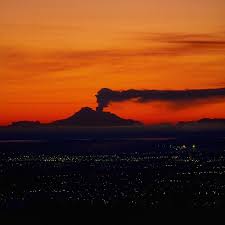The United States Geological Survey (USGS) has raised the threat level of one of America’s most dangerous volcanoes, indicating an increased potential for seismic activity. The volcano, named Mount Hood, is located in the Pacific Northwest region of the country.
Recent assessments suggest that Mount Hood is showing rising levels of volcano-tectonic activity, which are often precursors to eruptions. However, while the signs of an imminent eruption are not yet present, scientists are keeping a vigilant watch on Mount Hood’s activities.
The last time Mount Hood erupted was in the 1860s, and it has a history of major eruptions every 500 to 1,000 years. Despite this lengthy lull, it’s still considered a significant threat due to its close proximity to populated areas such as Portland, Oregon and Vancouver, Washington.
According to the USGS, a major eruption could release hot ash and debris, causing significant damage to surrounding towns. In its recent threat level assessment, the USGS raised Mount Hood from a “very high” to a “high” threat level. This is owing to the recent episodes of magma intrusion and ongoing seismicity being observed.
The USGS’s alert system includes four levels: normal, advisory, watch, and warning. The recent shift for Mount Hood sees it categorized as “advisory,” suggesting that conditions are abnormal. However, there is currently no threat of an immediate eruption.
“Our understanding of volcano behaviour tells us that this is what Mount Hood does; it has periods of unrest,” said John Pallister, a USGS geologist. He added that while it’s important not to panic, the elevation of the threat level serves as a reminder for people to review their emergency plans and to remain prepared in case of an eruption.
In the United States alone, there are more than 160 active volcanoes, and Mount Hood is one of 18 classified as “very high threat.” The USGS regularly monitors and reports on their activity as part of its ongoing efforts to protect public safety. Source
Last modified: March 29, 2025



